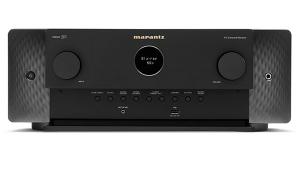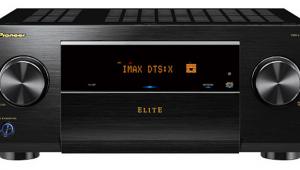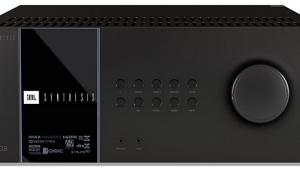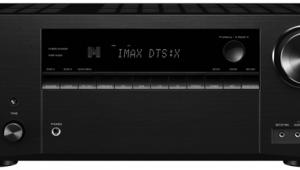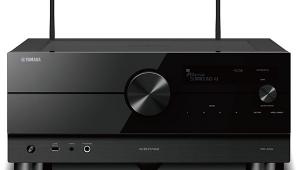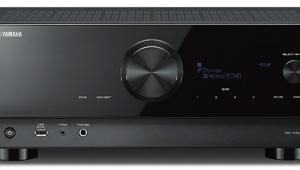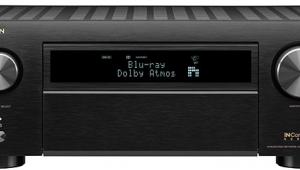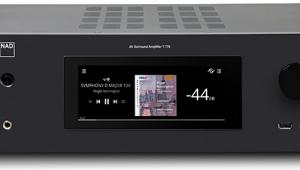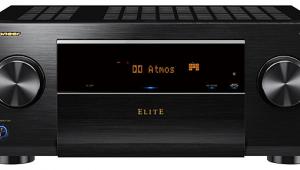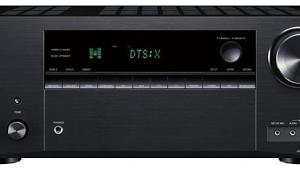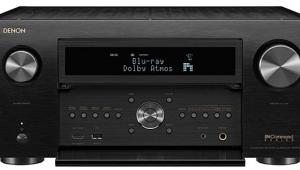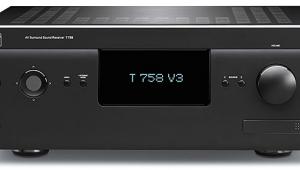Onkyo TX-NR838 AV Receiver
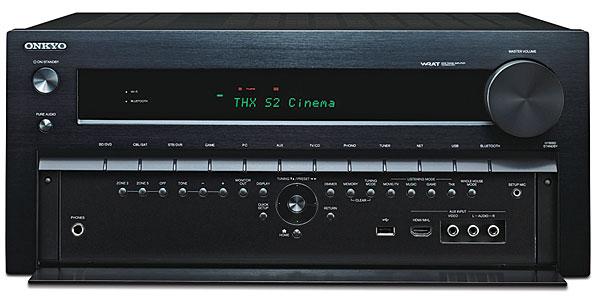
AT A GLANCE
Plus
Ready for UHD with HDMI 2.0
Refined amplifiers headline strong sonics
Outstanding multiroom abilities, including dual HD-on-HDMI programs
Dolby Atmos capability
Minus
Proprietary auto-EQ had much subtler effect than previous-gen’s Audyssey
THE VERDICT
Onkyo’s usual benchmark audio and video get incremental upgrades, plus new features that include future-proofing HDMI 2.0 and Dolby Atmos.
Onkyo may or may not be the actual market leader in audio/video receivers, measured by unit sales, dollars, or any other B-school metric you care to name. But I’m fairly certain that, year in, year out, they produce more new AVR models combining performance, value, and innovation than anyone else. The TX-NR838 is a suitable example. On the face of things, the receiver seems identical to last year’s TX-NR828, which it replaces: unchanged power ratings, same basic specs, nearly identical quantities of inputs and outputs (this year’s version drops the composite count by one and kicks S-video to the curb altogether), and largely untouched cosmetics and user interface. But look a bit closer, and distinctions begin to come to light.
New and Different-er
The first and most visible addition, no doubt, is HDMI 2.0 and HDCP 2.2: The TX-NR838 has the latest Ultra High Definition–ready version on all ins and outs. This means you could, in fact, adorn your system with as many as seven UHD/4K video sources (that’s humor, son) and direct them to two different UHD/4K displays, with complete impunity. (To my mind, UHD’s as yet unrealized potential for enlarged color space and greater bit depth may prove far more important than the quad-pixels thing, but that’s a topic for another time and place.) And of course, the TX-NR838 not only handles UHD/
4K passthrough, but its video processing can also upscale HD or even standard-def material to UHD format.
The next most prominent change of note is the replacement of third-party Audyssey’s MultEQ auto-setup/calibration/EQ with Onkyo’s own proprietary system, AccuEQ, which is presumably cheaper, at least in terms of licensing fees. This covers much the same ground as the Audyssey cal-bot, although, inevitably, to subtly different effect.
Notably, the TX-NR838, following an expected free firmware update this fall, will also be Dolby Atmos-capable; with the addition of in-ceiling speakers or "Atmos-enabled" box speakers offered by various manufacturers, it will decode and render Atmos soundtracks from some Blu-ray discs or Dolby Digital Plus Internet streams. Then, there are some subtler details. One is a front-panel, MHL-compatible HDMI jack. Another is the ability to send digital audio sources— whether from streaming, HDMI, or USB origins—to Zone 2/3 stereo outputs, something the earlier model couldn’t match, and which will doubtless prove genuinely valuable in multiroom installations.
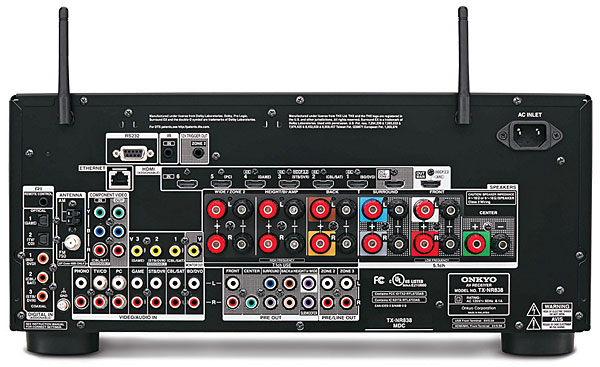
As I continued to scratch the surface, however, it became clear that the TX-NR838 is a slightly even more different-er design than I had at first surmised. For one thing, Onkyo specifies the new model’s digital- processing hardware as dual-32-bit DSPs, while its amplifying facilities earn the company’s Wide-Range Amplifier and High-Current power- supply monikers (its predecessor claimed neither distinction), both trickle-downs from earlier, flagship- oriented Onkyo models. And there’s a weight difference, too: not much, but a couple of pounds, so some- thing must be going on in there—probably on the power-amplifier end.
What’s Inside
Enough speculation. I unboxed the TX-NR838 and hoisted it onto my rack, connecting my everyday digital-cable and Blu-ray sources, and my long-term loudspeaker suite, which includes Energy Veritas fronts and an SVS PC12-Ultra sub. The setup process proved uneventful. Onkyo’s new AccuEQ ran through
its sequence of noise bursts, from which it derived channel levels and subwoofer crossovers that, while not precisely identical to my manually fine-tuned everyday settings, were very close indeed. On that basis alone, AccuEQ earns at least one accolade.
AccuEQ collects room/speaker-response data from one location only (the prime listening position), whereas Audyssey MultEQ, depending on the version, can do so from eight or more. So AccuEQ can’t be as comprehensive in its analysis (and, presumably, compensation) of room effects and, thus, in its correction of room/speaker inter- actions, at least from the theoretical perspective. For our purposes, though, this is a debate of potentials only, since to reduce variables, I as always did all of my extended evaluating with the EQ system defeated. That said, I did do a little informal listening to AccuEQ and found its results to be similar in overall intent to those of Audyssey’s systems (very slightly tighter bottom octaves; barely airier top treble) but sub- stantially less pronounced in effect. This experience mirrored somewhat the one I had prior with AccuEQ on the 838’s little brother, the TX-NR636 (review at soundandvision.com). Still, the jury remains out; to draw final conclusions about any of these systems from one or two instances in one room with one system is dangerous.
Otherwise, setting up Onkyo’s latest held few surprises. The onscreen interface is clear and largely self-prompting. Onkyo has reorganized their onscreen menus from previous generations, and the new system, while less familiar to me, may actually be an easier entrée for new users. In the TX-NR838’s edition, they’ve also added a new, self-touring setup step for confirming and identifying input sources, and one that semi-automates HDMI-borne unified-remote control (CEC). This last notion opens up a whole ’nother can of worms, however, since enabling CEC on multiple components can have unexpected results—such as, in my case, dueling onscreen displays for volume control: the receiver’s and my television’s. (Anyone who has gone down the HDMI-control rabbit hole probably knows what I’m talking about.)
Music Maker
In today’s home theater context, when we talk about A/V receivers, we’re mostly talking about amplifier and digital-to-analog performance, and ergonomics. The quality differential in decoding formats like Dolby TrueHD and DTS-HD Master Audio, if any, is presumably very slight, and even digital-to-analog conversion has progressed such that the differences between even very modest, mass-market hardware and esoteric standalone converters is surprisingly small. I’ve heard several very inexpensive receivers, especially from quality makers like Onkyo, produce fine results in these areas.
Consequently, a higher-end model like the TX-NR838 has its work cut out for it to impress the jaded reviewer that lives within all of us. Fortunately, Onkyo’s latest proved more than up to the challenge. To begin with, direct stereo music playback (no sub- woofer, no processing) proved to be of a very high grade, with clarity, dynamics, and tonal definition that simply weren’t commonly associated with receivers a decade or two ago. And this held true with the best grade of programming, such as a high-res file of “Dreams” from Fleetwood Mac’s Rumours, which I streamed from my desktop’s NAS library. (Yeah, I know—but I’ve used this track in so many environments on so many systems, it’s a bit of an aural Swiss army knife.) Here I heard as much clarity and definition as I’ve ever gleaned from this chestnut: The hi-hat ride had the same brass-edged, wood-sticked immediacy (Mick Fleetwood is playing it with the side of his stick, not the head), and Stevie Nicks’ airy rasp had all the convincing presence (as did the residual tape-hiss) that my everyday, separate-component system produces. And the TX-NR838 proved to have real guts: I could play Rumours, or any similar studio pop/rock program, as loud as I would ever ask (and quite a bit louder), and the receiver would give no sign of aural straining, coloration, or obvious compression.

